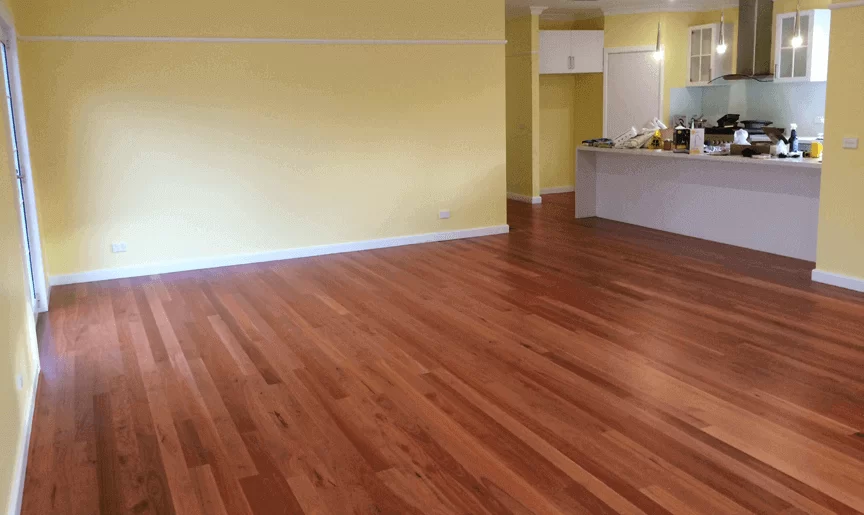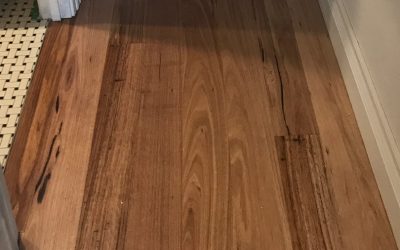Water-Resistant Timber Flooring: Is It Possible?
Timber and moisture have always had a complicated relationship. Wood swells when it absorbs water and shrinks as it dries. That’s why old wooden floors creak—years of expansion and contraction have taken their toll. But modern innovations have changed the game. Water-resistant timber flooring isn’t as far-fetched as it once was.
What Does “Water-Resistant” Actually Mean?
Some people think water-resistant means waterproof. It doesn’t. Waterproof flooring can handle complete submersion without damage. Water-resistant flooring, on the other hand, repels moisture for a certain period before absorbing it. That buffer makes all the difference in high-traffic areas prone to spills.
So, can timber really hold its ground against moisture? Short answer: Yes, but with some caveats.
Engineered Timber: A Smarter Approach
Traditional hardwood isn’t built for moisture. It soaks up water like a sponge. That’s where engineered timber comes in. Unlike solid wood, it consists of multiple layers. The top layer is real timber, while the base layers are high-density fiberboard or plywood. This structure reduces the risk of warping.
Protective Finishes: Your First Line of Defense
A quality finish acts like a raincoat for timber. Modern sealants can significantly slow down moisture absorption. Polyurethane coatings, hard wax oils, and aluminium oxide finishes create a barrier that keeps timber in shape. But even the best finish has its limits. If water sits on the surface too long, it will eventually seep in.
The Role of Proper Installation
Even the toughest timber flooring won’t stand a chance if it’s installed poorly. Gaps between planks allow water to sneak in, causing the boards to swell. Proper acclimation, subfloor preparation, and professional fitting help prevent this. Skipping these steps is like trying to fix a leaky boat with duct tape—sooner or later, trouble will follow.
The Rise of Hybrid Flooring
For those who want the look of timber but need stronger moisture resistance, hybrid flooring offers a solid middle ground. It combines the beauty of real wood with the resilience of modern composites. A rigid core layer provides stability, while a waterproof top layer shields against spills. It’s a practical choice for kitchens, bathrooms, and entryways.
How Do Different Timber Species Handle Moisture?
Not all timber is created equal. Some species handle moisture better than others.
- Spotted Gum & Blackbutt: These Australian hardwoods have natural oil content, making them more humidity-resistant.
- Teak: A favourite for boat decks, teak has high oil content, making it less prone to water damage.
- Oak: Oak floors in Melbourne are a popular choice, but they require proper sealing to resist moisture. Without the right treatment, they can expand and contract significantly.
Where Can Water-Resistant Timber Be Used?
Timber has traditionally been avoided in wet areas, but things are changing. With the right precautions, it can work in:
- Kitchens: Spills are inevitable, but well-finished timber can handle them. Just clean up quickly.
- Living Areas: A well-maintained surface makes timber a warm, inviting option.
- Bathrooms: Risky, but possible with waterproof underlayment and regular sealing.
Laundry rooms and basements remain a challenge. Unless humidity levels are tightly controlled, timber in these spaces asks for trouble.
Maintenance Matters
Water-resistant doesn’t mean being maintenance-free. To keep timber flooring looking its best:
- Wipe up spills immediately: The longer moisture lingers, the higher the risk.
- Use the right cleaners: Harsh chemicals can strip away protective finishes.
- Control indoor humidity: Wood expands in humid conditions and shrinks in dry air. A stable environment minimises movement.
- Reapply sealants as needed: Over time, protective coatings wear down. Refreshing them extends the floor’s lifespan.
The Future of Water-Resistant Timber Flooring
Timber flooring has come a long way, but innovation never stops. Researchers and manufacturers are constantly developing new treatments, coatings, and engineered solutions to enhance wood’s resistance to moisture.
One exciting development is nanotechnology-based finishes. These microscopic coatings create an invisible shield that repels water without affecting the timber’s natural beauty. Unlike traditional sealants, nanotechnology doesn’t wear down as quickly, offering longer-lasting protection.
Another breakthrough is thermally modified wood. By subjecting timber to extreme heat and pressure, manufacturers alter its cell structure, making it less absorbent. This method doesn’t rely on chemical treatments, making it an eco-friendly alternative to synthetic coatings.
But technology isn’t the only factor in play. Consumer preferences are shifting. More homeowners want sustainable flooring that balances aesthetics with functionality. This demand is pushing the industry to create timber products that meet modern lifestyle needs without sacrificing durability.
Comparing Timber to Other Flooring Options
Let’s be real—timber isn’t the only flooring that looks good and lasts long. How does it compare to other popular choices?
- Vinyl Planks: Completely waterproof, budget-friendly, and available in timber-look finishes. However, they lack the authentic warmth of real wood.
- Tiles: The ultimate water-resistant option, but they can feel cold and hard underfoot. Timber offers a more inviting feel.
- Laminate: More water-resistant than standard timber, but if moisture seeps through the seams, swelling becomes an issue.
- Hybrid Flooring: The best of both worlds—real wood aesthetics with a waterproof core. Perfect for moisture-prone areas.
The key takeaway? Timber can hold its own against these options with the right treatment and care.
The Practicality of Timber in Everyday Life
For many homeowners, timber flooring isn’t just about aesthetics—it’s about longevity. A well-maintained timber floor can last for generations, developing character over time. That’s something synthetic flooring can’t replicate. But practicality matters too.
In homes with kids, pets, or high foot traffic, spills are inevitable. Water-resistant timber flooring helps buy time, but quick action is still necessary. Dropped drinks, muddy paw prints, and kitchen mishaps won’t ruin the floor immediately, but prolonged exposure will take its toll. That’s why a proactive approach is essential—think rugs in high-risk areas and furniture pads to prevent scratches.
Timber and Changing Climates
Climate control plays a crucial role in timber performance. Wood is a natural material, meaning it reacts to its environment. Excessive moisture causes expansion, while dry conditions lead to contraction. That’s why homes with timber flooring benefit from stable humidity levels. Using dehumidifiers in damp seasons and humidifiers in dry months can help maintain balance.
Even the best water-resistant treatments can’t override physics. But with mindful care and modern innovations, timber flooring can thrive in homes where moisture is a concern. It’s not just about choosing the right material—it’s about creating the right environment for it to last.
The Reality Check: Is It Worth It?
If you love the warmth of timber but worry about moisture, a few workarounds exist. Engineered timber, hybrid flooring, and strong sealants can help. But no natural wood product is invincible.
For homes that battle high humidity or frequent spills, considering alternatives like waterproof vinyl or tiles might be wise. However, for those set on timber flooring, proper care can keep it in great shape for decades.
Water-resistant timber flooring is possible, but it requires a little extra effort. It’s not about finding an indestructible solution—it’s about choosing materials and maintenance habits that keep your floors looking their best.



